How to find the best location?
The correct location of the cabinet is largely determined by the initial parameters of the hallway: the area of the room and its geometry.
The easiest way is if the room has niche - then the structure is simply built between the walls, closed with doors. At the same time, respectively, in a large corridor, the cabinet will turn out to be overall, in a small one - compact.
If a the corridor is long and narrow, the storage is placed along one of the elongated sides. In this case, the depth is more important, not the length of the furniture - for free movement around the room, pulling things out or folding them into a closet, at least 1 meter (preferably 1.2-1.4 m) of free space from door to wall is required.
IN square hallway you can also take one side, turning the room into a rectangular one, or put a corner cabinet.
Advice! In studio apartments, the sliding wardrobe can act as a partition between the hallway and the living room.
What type of cabinet should you choose?
Sliding wardrobes mainly differ in shape:
Direct
The classic model, located along one line. It can be absolutely any length, depth, height.
In the photo there is a two-door wardrobe with mirrors
Corner
The cabinet is placed not on one, but on two walls - at the same time it takes an equal distance from the corner or stretches along one of the sides. Corner wardrobes are divided into L-shaped, trapezoidal, radial.
The first ones look like two products docked at an angle of 90 degrees - they hold the least amount of things in comparison with the next two. Trapezoidal and radial are larger in size, the former have a beveled corner, the latter have a rounded contour.
In the photo there is a corner wardrobe
By installation method there are built-in, semi-recessed, free-standing versions.
- As the name implies, built-in wardrobes the walls of the room are used as the side and back walls, the ceiling serves as a cover, and the floor is the bottom. In fact, this is a niche with shelves, closed by doors.
- IN semi-recessed usually one of the side or rear wall (in cabinets, partitions) is replaced by a piece of furniture.
- Freestanding do not depend on walls, floors and ceilings - their main advantage is that when rearranging or moving the wardrobe can easily move or be transported to a new place.
Freestanding, in turn, can be customized or modular. The first ones are made individually, taking into account the size of the room, its features. The second type is assembled from ready-made modules of standard dimensions.
The advantage of modular systems in price and speed is that products from the mass market are cheaper, and to buy and assemble sections you need literally in 1 day (you don't have to wait for production!).
Size Guidelines
Only 2 things affect the size of the wardrobe: the area of the hallway itself and the required volume of internal space.
You will have to put up with the first parameter, because in most cases, changing the layout of the corridor will not work. Therefore, just use the most logical way to determine the size: the furniture should fit the room. The more spacious the hallway, the more space the "pantry" can take.
To determine the required volume, you need to understand what exactly and in what quantity will need to be placed in the closet (this will also help to correctly design its filling on your own or during joint work with a designer).
If there are not so many things, it is probably worth completely abandoning the idea of a wardrobe and replacing it with something more compact, mobile - a pencil case or a chest of drawers.
What color to choose?
The sliding wardrobe should fit into the interior of the hallway not only in size, but also in shade. In fact, the entire color gamut is divided into dark and light colors.
Dark wood furniture is a classic. Brown shades of oak, walnut, wenge or cherry look expensive and will fit best with traditional or classic styles - classicism, English, colonial.
In the photo there is a dark wardrobe
In modern apartments, natural wood or its imitation is used less often, so dark wardrobes can be with gold, black, dark gray or any colored facades.
However, more often in the 21st century, various light colors are used - beige, cream, pearls, snow. White color looks visually lighter, so even such a massive structure as a wardrobe will not clutter up the room.
Facade options
The main role in the design of the wardrobe in the hallway is played by doors, because basically only them are visible.
In most cases, mirrored facades are used. They not only hide the contents of the cabinet, but also perform a useful function - you do not have to place an additional mirror in the corridor.
In addition, reflective surfaces visually expand spaces, so the models are suitable even in small hallways... Mirrors can remain unadorned or designer.
You can arrange it in several ways:
- Frames, baguettes... Stylish strips decorate the ends of the mirrors or "divide" them into sectors.
- Sandblasting... With the help of a special device, any drawing you like is applied to the surface.
- Film... If you want to make the mirror unusual - dark or colored - just glue the "tint" on it.
- Special paints... Stained glass painting on sliding wardrobes is rarely used, but in special cases it looks very harmonious.
In the photo, the design of mirrored doors
Furniture facades can be not only mirrored. Today's trends are leaning towards minimalism: solid glossy or matte doors made of modern materials (mdf, chipboard) look more expensive than decorated mirrors.
Important! Light gloss, like mirrors, visually increases the area. Use individual techniques or a combination of them to make a small hallway more spacious.
Recently widespread reception - reiki... A reference to the design of the middle of the last century is now firmly entrenched in the top trend solutions.
What to consider when organizing content?
As mentioned earlier, choosing the perfect wardrobe is possible only if you start from personal needs. Therefore, before making an individual order or purchasing modular elements, write down what exactly you are going to store inside, measure each item if possible (for example, a vacuum cleaner, a suitcase, the width of hangers).
The compiled list will allow not only to understand the depth of the cabinet and the dimensions of the compartments, but also to develop the correct filling, which means - to guarantee order in the future:
- in drawers you can store clothes (vertical method), hats, scarves, small things (like shoe polish);
- on open shelves it is necessary to place boxes, shoes, bags;
- the bar is used for seasonal placement of outerwear.
Important! It is more convenient to store outerwear while wearing it on open hooks at the front door, and to put it in the closet only for a long time.
A good wardrobe differs from a poor one in ergonomics, which is mainly reflected in the height of storage of certain things:
- The placement of the bar depends on the height of the owners - the shortest person must reach it with an outstretched hand. The standard height is 190 cm. If you need to set it higher, the pantograph will come to the rescue.
- If the shelves cannot be reached without a stool or step-ladder, this is already mezzanine... It stores rarely used items - spare blankets, New Year's toys, seasonal accessories (skates, fins and a mask).
- The lowest shelves, to which you have to bend, should also not be forced with something often used. Take them under the shoe organization.
An original idea for increasing the usable area is to equip the doors themselves with hooks. True, sliding ones for its implementation will not work, only swing ones. Place accessories on the inside of the doors - glasses, bags, belts, scarves, scarves.
In the photo, the option of filling the cabinet
Interior design examples
Designers are increasingly abandoning classic sliding sliding doors in favor of swing doors. Yes, the tire design does not require a front opening space - but it will have to be left in one way or another, otherwise you simply cannot use the cabinet. This means that ordinary swing facades will fit - jalousie, rack, deaf, mirror.
The following examples of wardrobes in the hallway literally scream: furniture should not look like a wall! If necessary, leave an open shelf on the side or make a niche in the middle of the cabinet, inside which a mirror, shoe rack or console with an ottoman can comfortably stand.
Depending on preferences, the wardrobe is made deliberately emphasized or hidden. To implement invisible furniture, the facades are painted to match the walls, making them absolutely smooth and even.
Do blind hidden doors seem boring? Decorate them with wooden moldings, original handles.
Thinking about organizing storage in the hallway? See ideas for hallways with a wardrobe in our photo gallery!

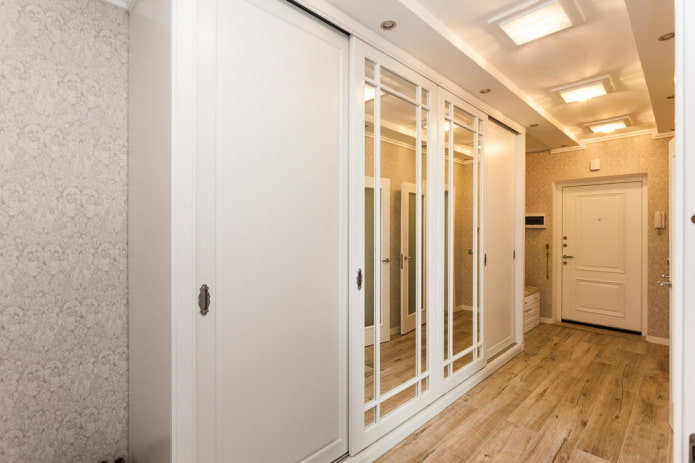
 10 practical tips for arranging a small kitchen in the country
10 practical tips for arranging a small kitchen in the country
 12 simple ideas for a small garden that will make it visually spacious
12 simple ideas for a small garden that will make it visually spacious

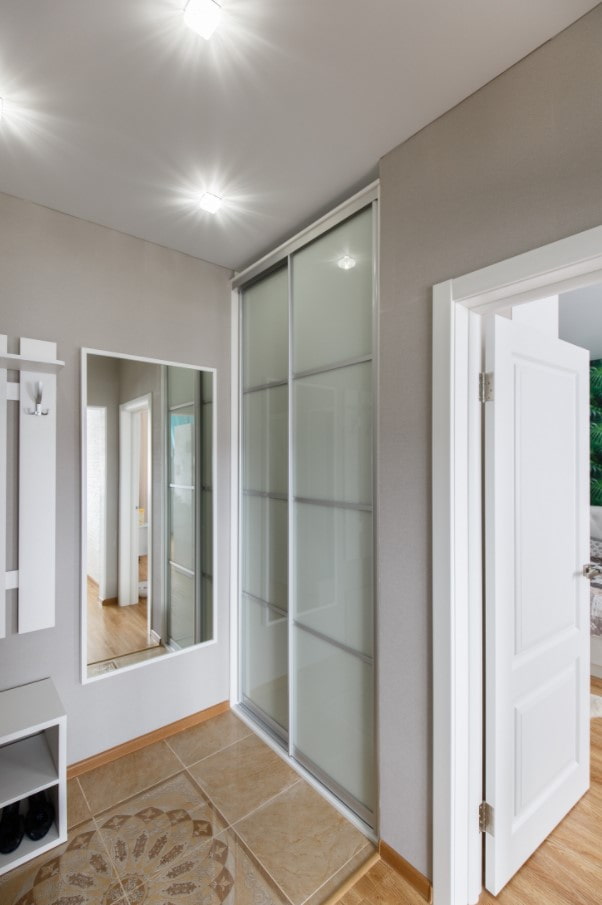
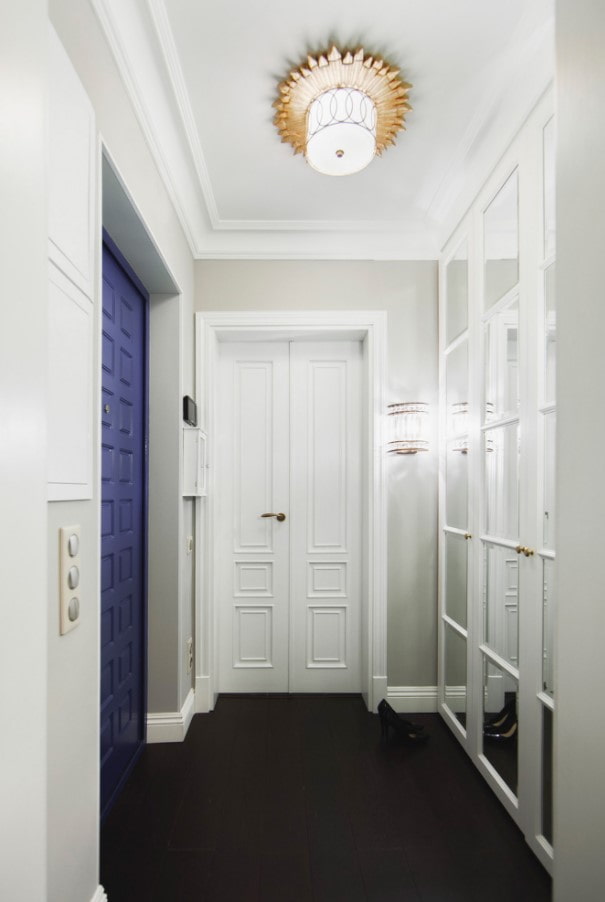
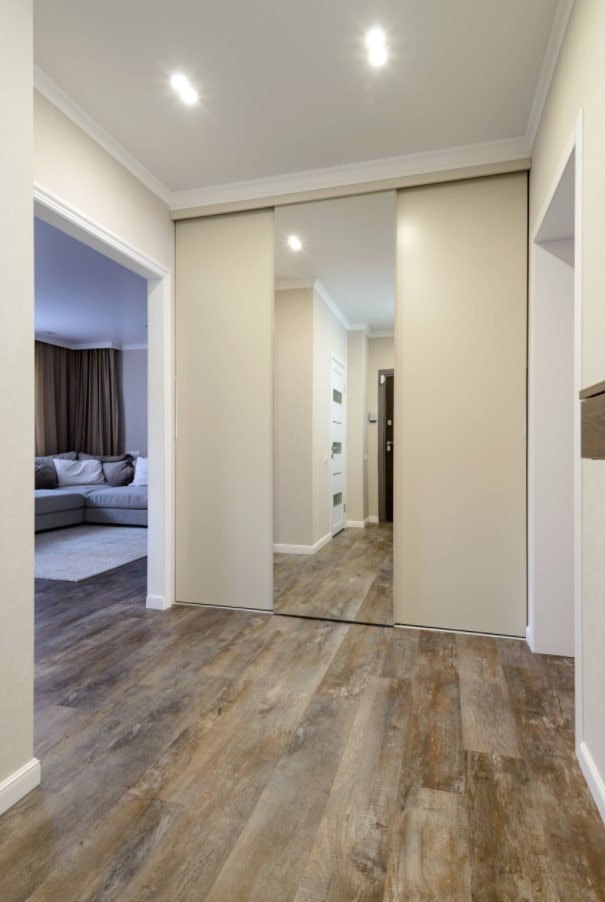
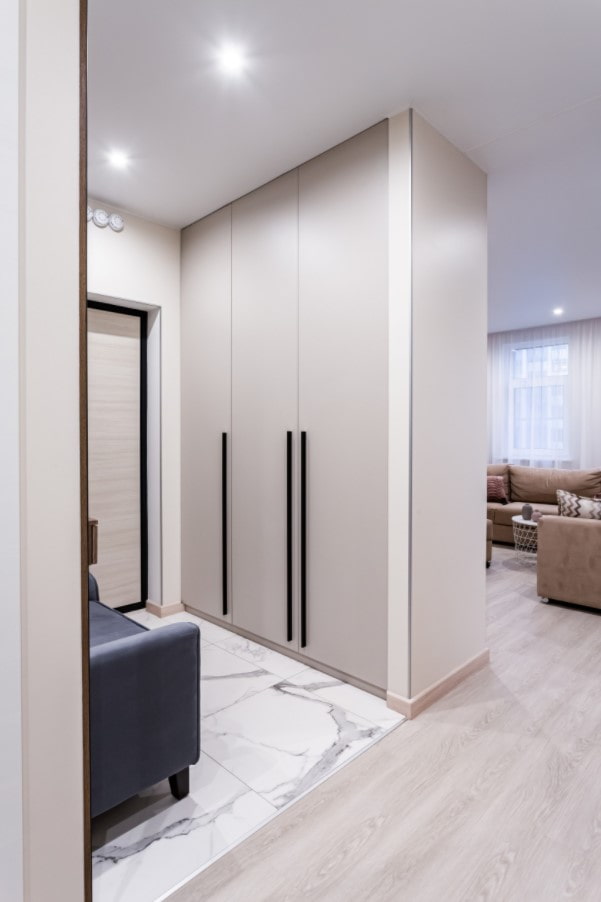
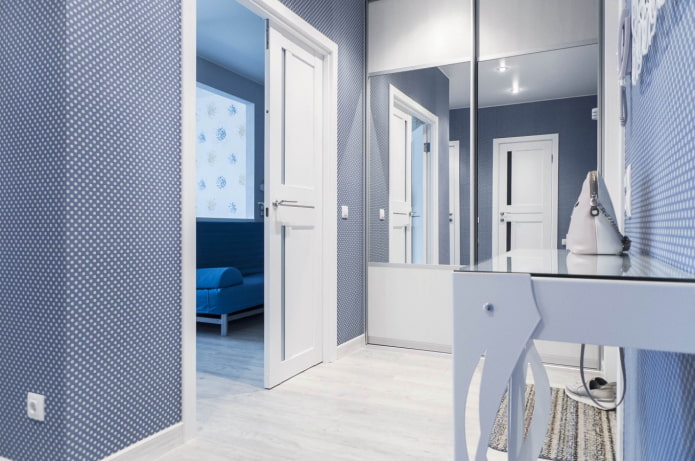
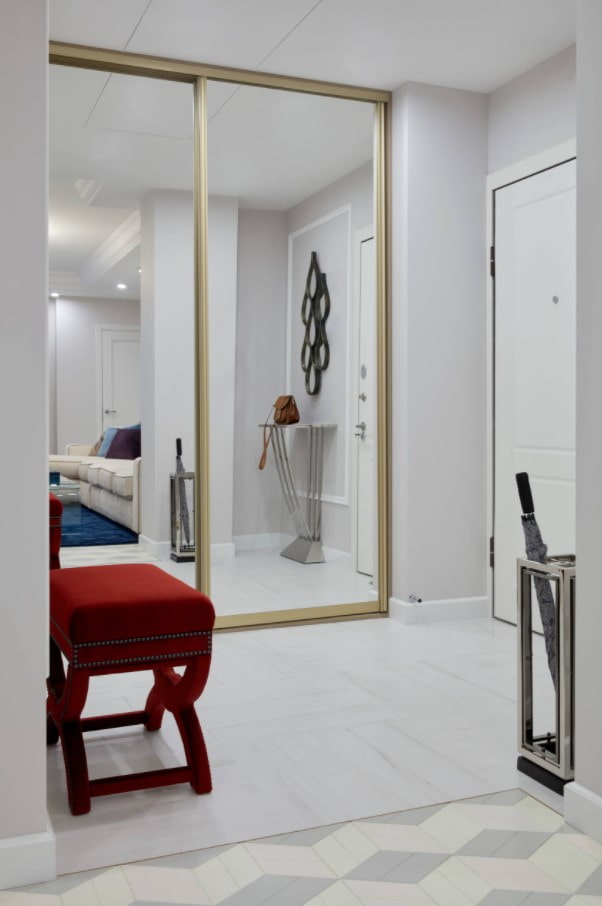

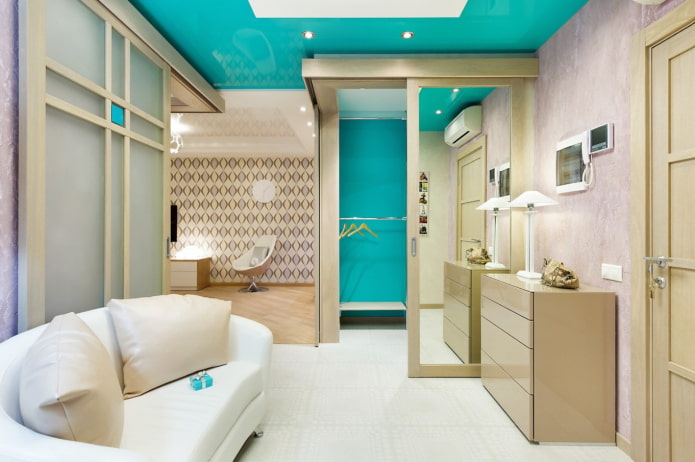
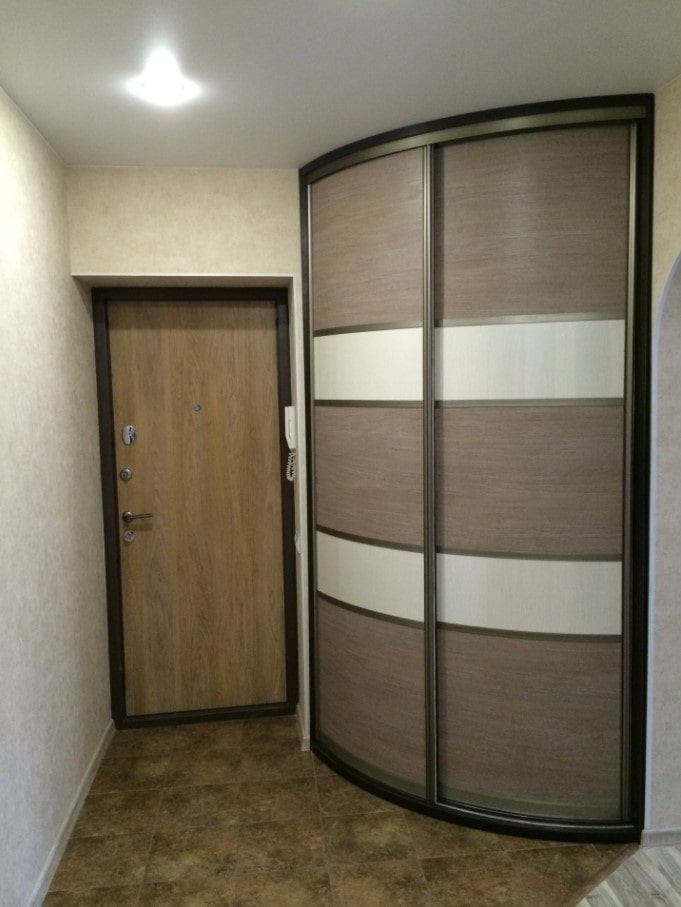
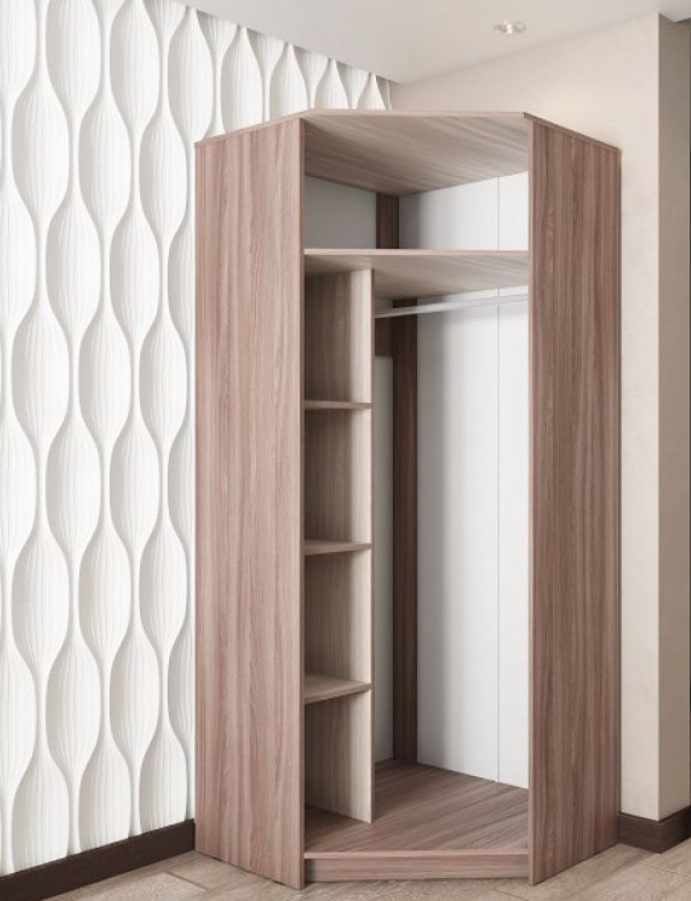

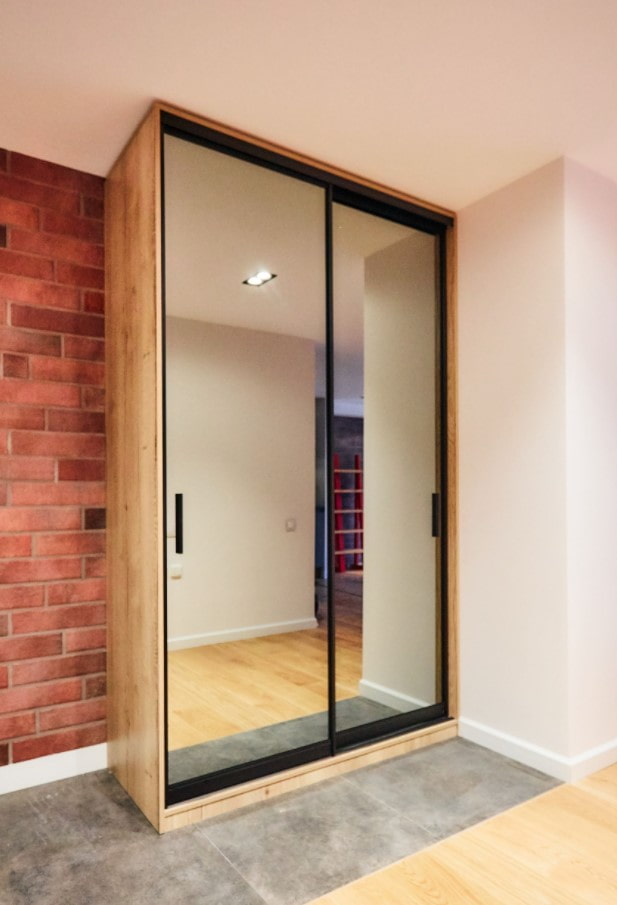
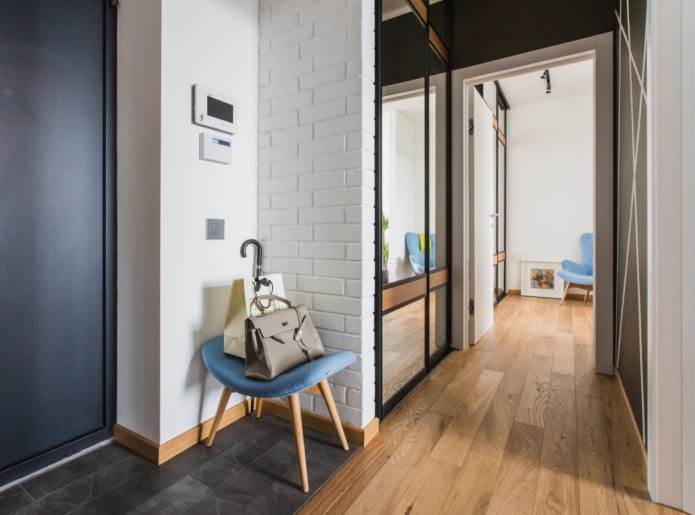
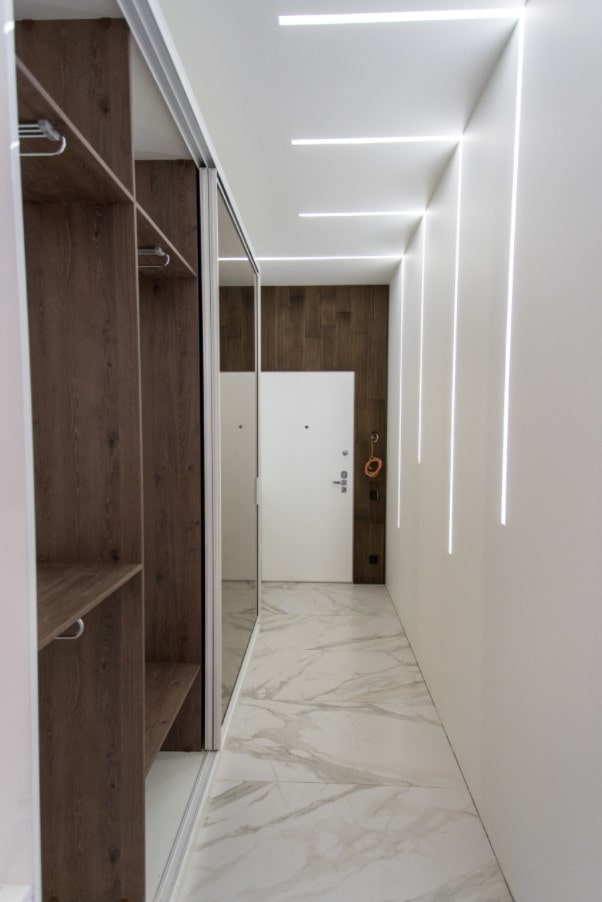
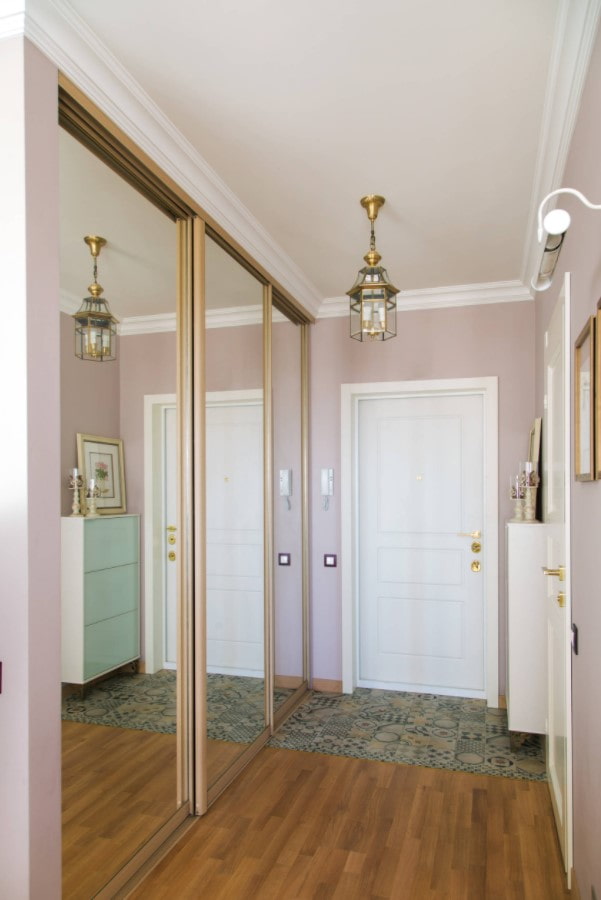
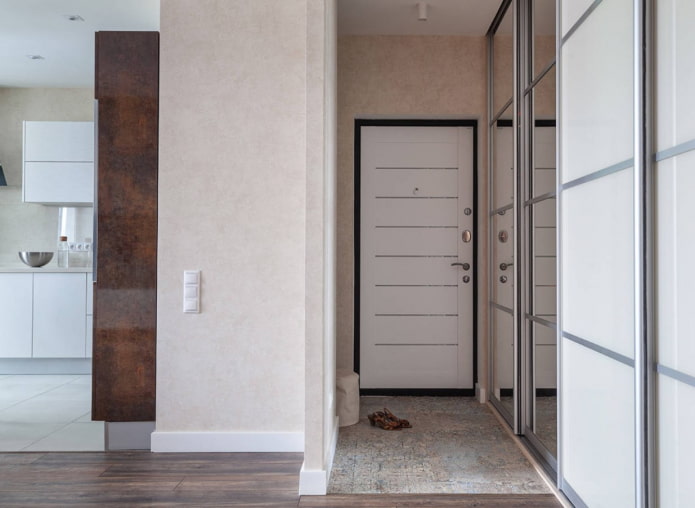
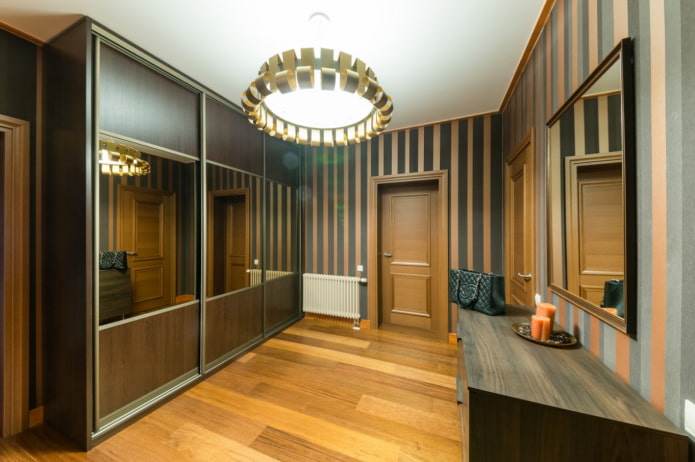
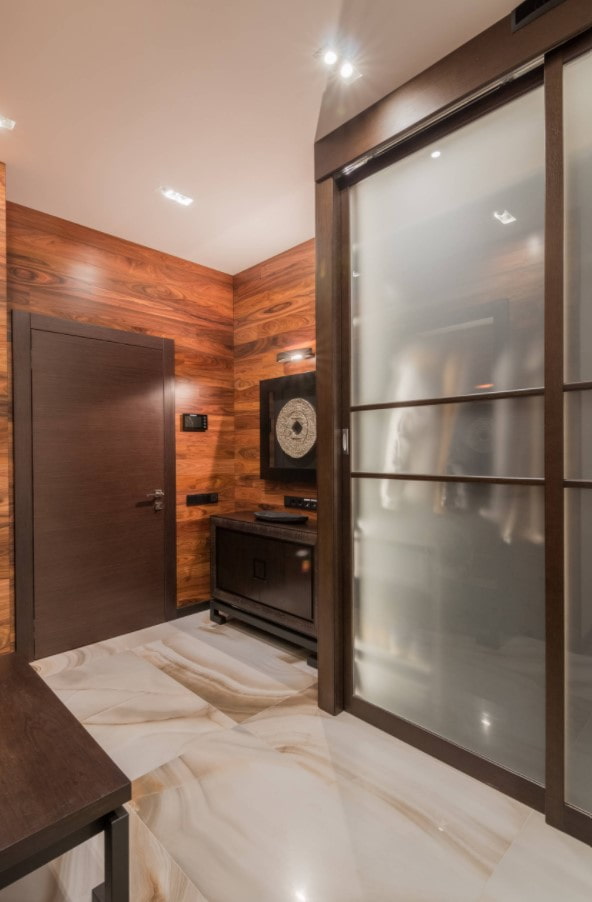
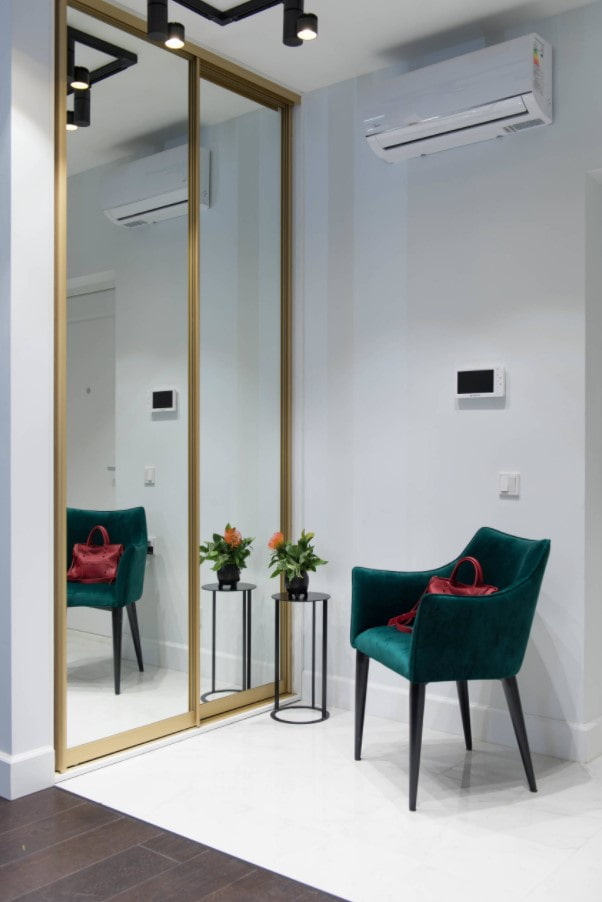
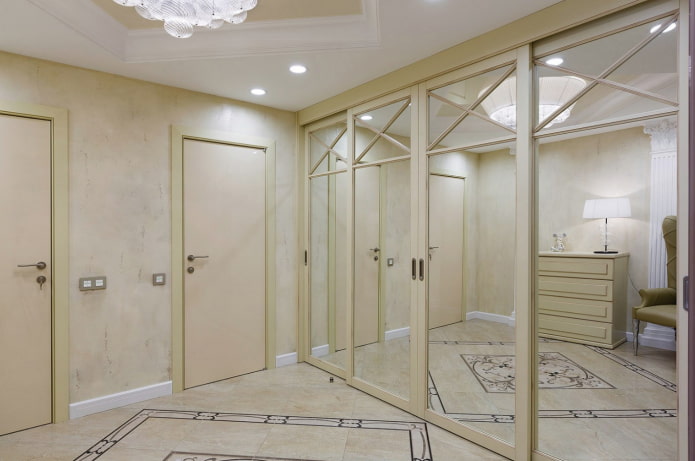

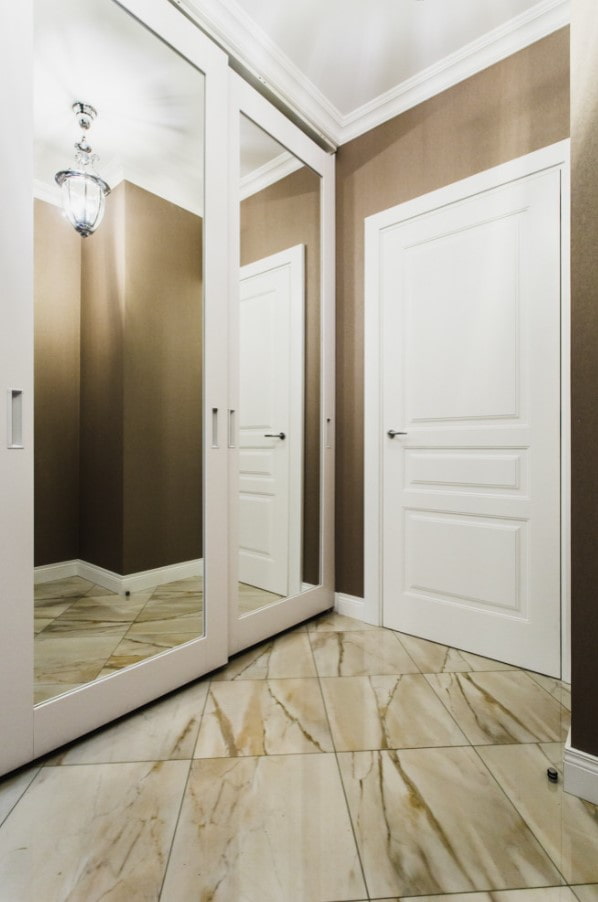
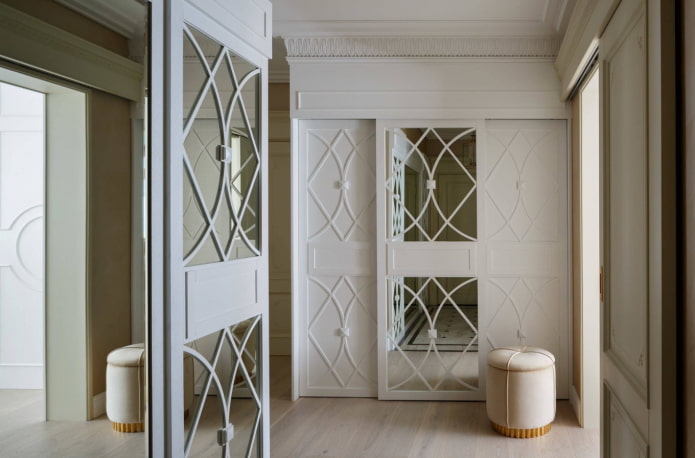

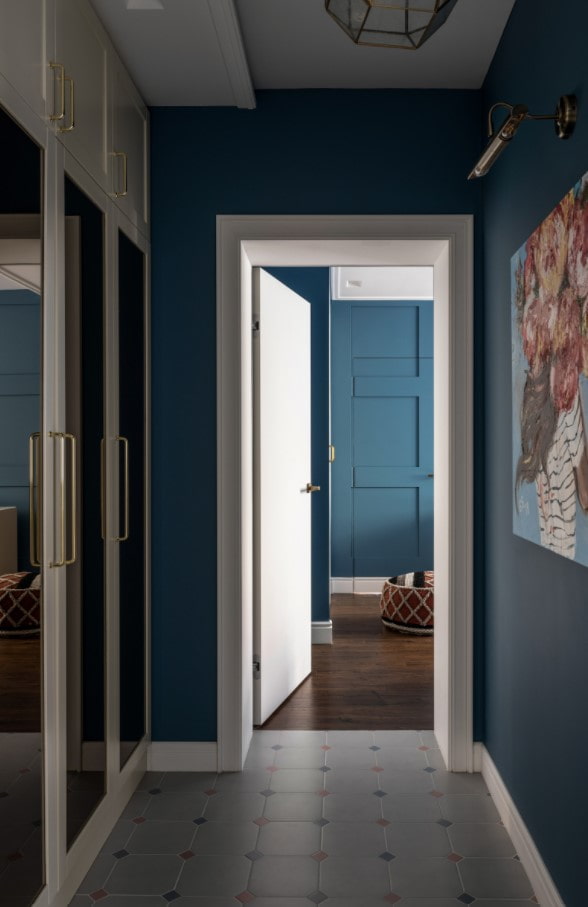
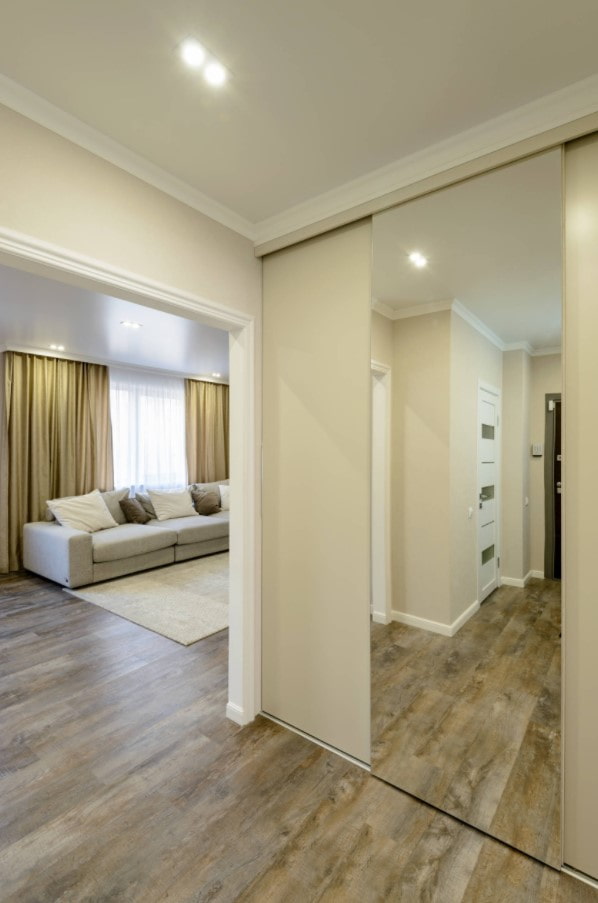
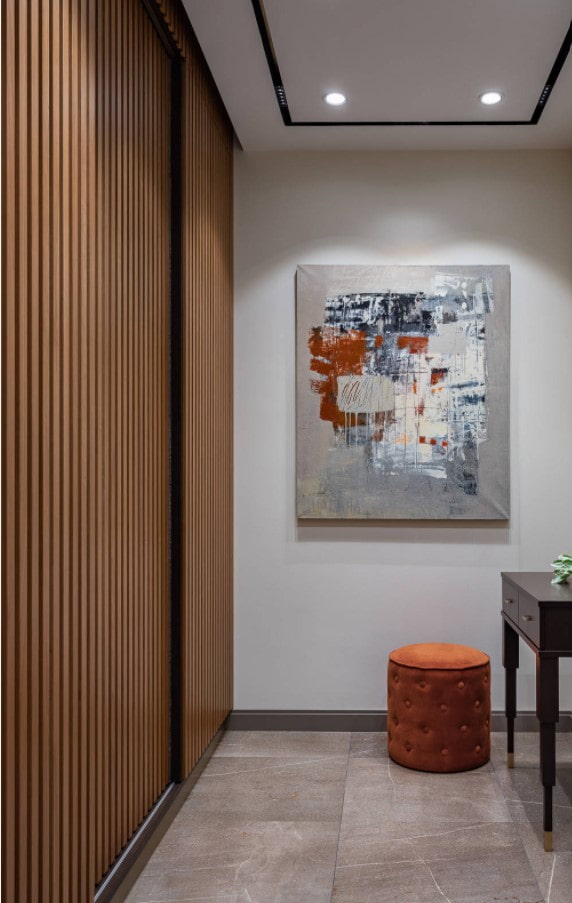

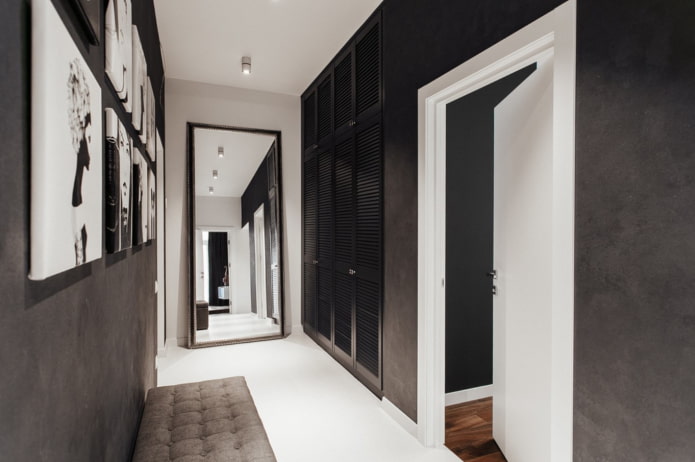
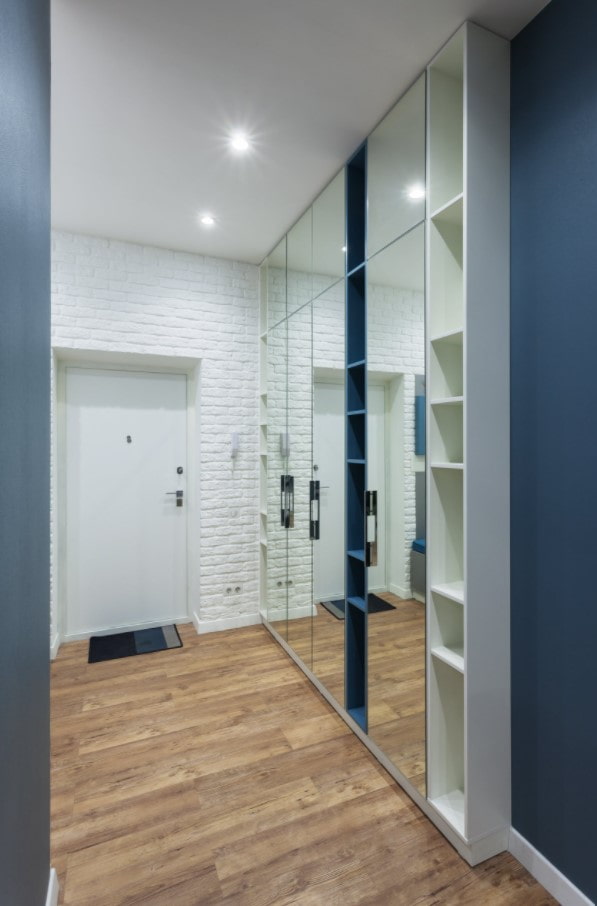
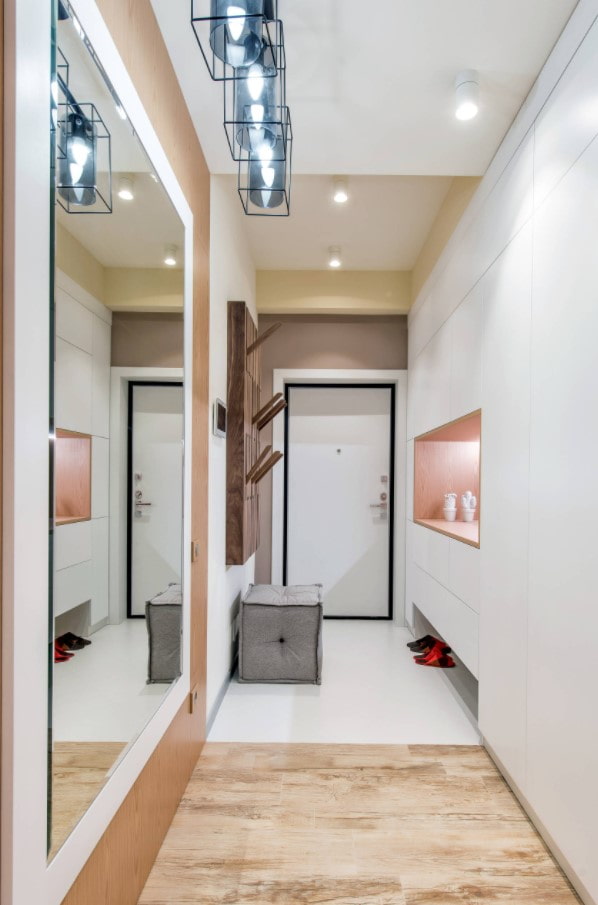
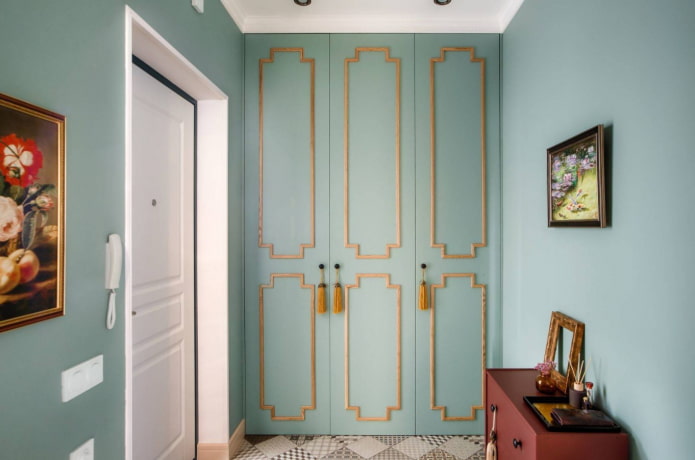
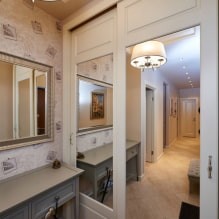
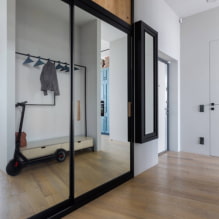
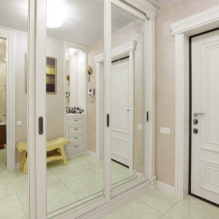
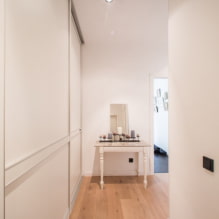

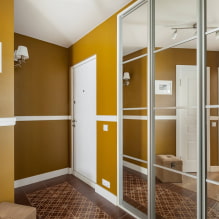
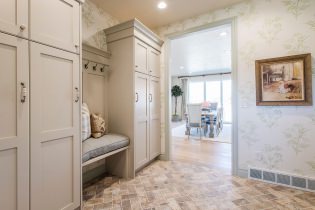 How to choose wallpaper for a small hallway: 70 design ideas
How to choose wallpaper for a small hallway: 70 design ideas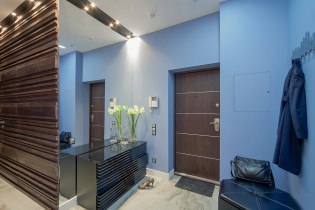 How beautiful to make a hallway in an apartment: design ideas, layout and arrangement
How beautiful to make a hallway in an apartment: design ideas, layout and arrangement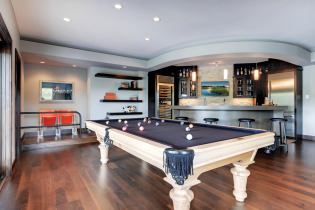 The interior of the billiard room in the house: design rules, photo
The interior of the billiard room in the house: design rules, photo Hallway design in white
Hallway design in white The most beautiful swimming pools in the world
The most beautiful swimming pools in the world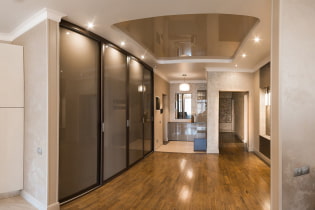 Ceiling in the corridor: types, color, design, curly structures in the hallway, lighting
Ceiling in the corridor: types, color, design, curly structures in the hallway, lighting